Wood Structures & Wood Windows – the Resurgence Continues
Click here to download the PDF version of this article.
There’s clearly a resurgence in wood buildings happening right now. With CLT beam construction being one of Architectural Digest’s Top 5 Architectural Trends for 2018, what was old is new again.
Advances in wood technologies are making once-impossible designs into extraordinary possibilities. High rise structures such as the one of world’s tallest all-wood structure, Brock Commons “Tallwood House” at the University of British Columbia, stands 18 floors high, constructed with CLT beams. Even taller wood structures are now being planned globally in Vancouver Canada, Malaysia, Japan and elsewhere, pointing to exciting new opportunities with wood, including wood windows and doors. Let’s take a look at those opportunities.
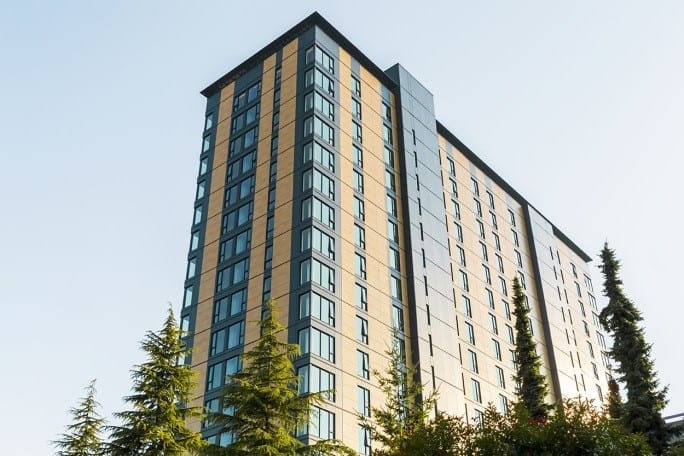
Above: Brock Commons Tallwood House. Images from Seagate Structures.
Cross Laminated Timber (CLT) beams have a fraction of the carbon footprint (they actually absorb rather than emit carbon), they are stronger than their steel counterparts, are made from a sustainable and renewable resource and are site assembled more quickly and at a lower cost. Win-win, indeed.
Advances in wood substrates themselves are also occurring at a rapid rate. New “super woods” are being developed with 10 times the density and strength of natural wood.
Science Daily quotes the research team of “super wood” as stating “This kind of wood could be used in cars, airplanes, buildings — any application where steel is used.”
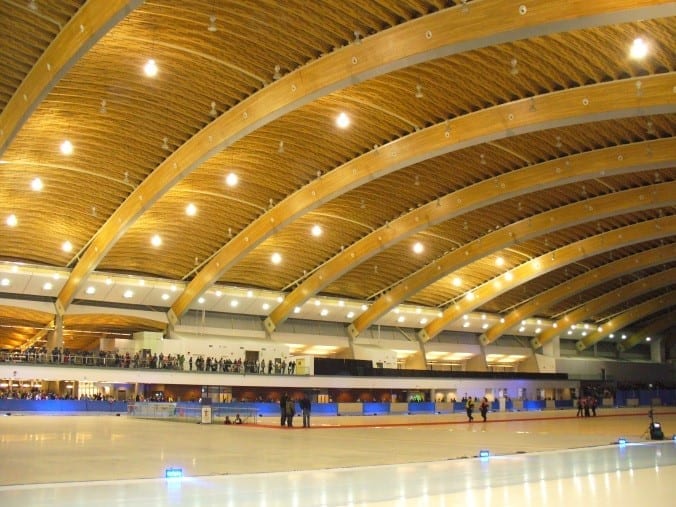
Another example is Vancouver’s Olympic Skating Oval with CLT beams spanning the entire width of the structure.
Wood ain’t what it used to be…but what’s this got to do with windows?
These developments have sparked a broad revival of interest in wood as a building material for windows and doors as well.
We’ve seen the demand for Accoya windows and doors steadily increase – which makes complete sense. Accoya is a modified timber that has long been used as a wood substrate. But it’s also an ideal material to consider for window and door construction. Why paint mahogany or Sapele when you could use Accoya for its performance and budget advantages?
Other wood species certainly come into play with stain grade finishes (no argument there) but Accoya takes a variety of stain finishes as well as paint. As with any wood species selection, it’s a question of whether the base coloration and the typical grain pattern works aesthetically with the design intent.
Looking into Accoya for Windows and Doors
Accoya is an acetylated treated wood substrate and has a 50 year warranty against rot in above ground applications (25 years in the ground), it’s FSC certified and highly versatile. Dynamic has used engineered cores of Accoya in all our stile & rail construction for years – the acetylation treatment greatly increases the stability of the wood by reducing expansion and contraction as well as inhibiting moisture absorption. Music to anyone fabricating fine tolerance millwork!
We’ve talked about wood species selection for windows before in our blog, Which Wood Species.
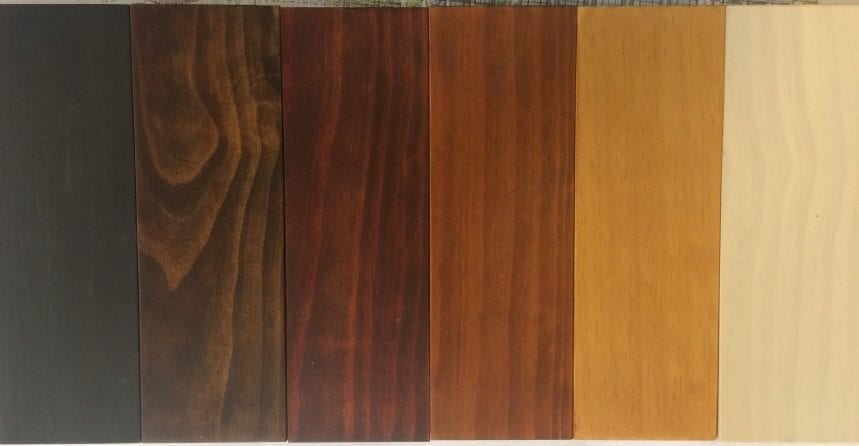
Stain finishes on Accoya. Note the “Shou Sugi Ban” aesthetic on the far left.
The Accoya folks sum it up better than we can:
“Some wood species are naturally durable, natural durability is known to be a variable and inconsistent property. Accoya wood, on the other hand, is consistently durable. The properties of every batch are analyzed by standard scientific measurements after modification, enabling its durability to at least match and even exceed the performance of nature’s most durable species, including teak.”
Accoya also offers other benefits:
- Offers improved insulation in comparison with commonly used hardwood and softwood species.
- Engineered cores of Accoya are more stable, warp and twist resistant and longer lasting than other wood substrate cores, making it ideal for oversized doors – sliding, French, bi-folding or pivot.
- Indigestible to a wide range of insects, including termites.
- FSC certified for additional LEED points.
- Naturally renewable.
- High strength to weight ratio makes it suitable for challenging applications.
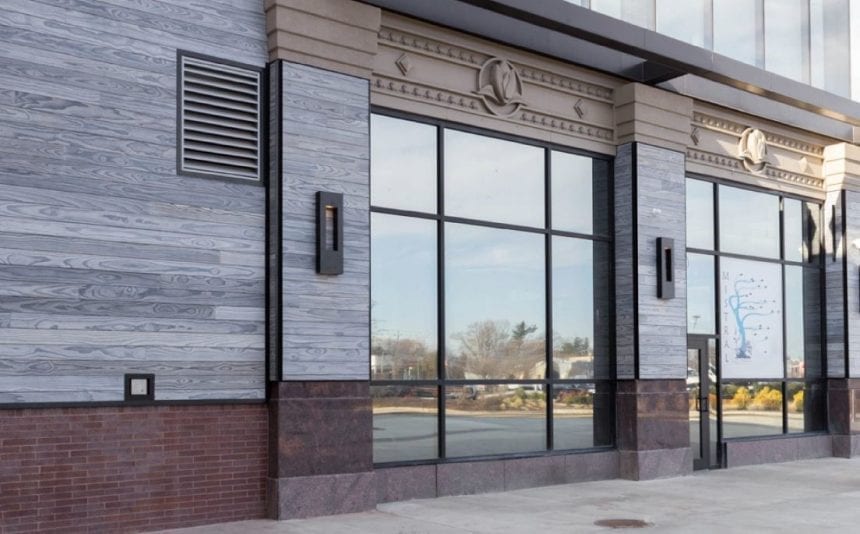
Accoya siding & Accoya wood storefront, Philadelphia.
As with CLT beam technology in high rise construction, wood substrates such as Accoya are changing the way windows & doors are designed and specified.
Whether it’s an estate home in the Hamptons or Long Island, in Pebble Beach or Malibu or, increasingly, high end retail or hospitality projects where the brand wants to differentiate and “pop” – wood is once again a material for serious consideration.
As with any window material and design, have a conversation with your window fabricator on your specific application, the pros, cons and relative values.
It’s an exciting time to be a tree – the job prospects are excellent.
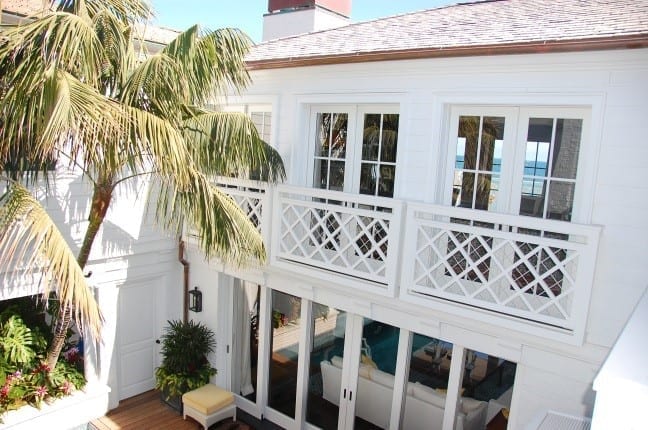
This Malibu beach house was specified with Dynamic’s painted Accoya wood windows & doors.






